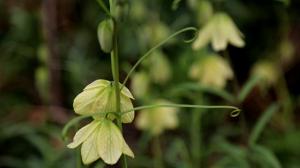1、 Curing method
1. Temperature: Hovenia dulcis Thunb has good adaptability to temperature, and its cold resistance is also relatively strong. The suitable temperature is between ten and twenty-five degrees. However, low temperature generally does not cause harm to it. Generally speaking, it is safer not to be lower than minus 15 degrees. In an environment of minus 30 degrees, it may be frostbitten

2. Illumination: Hovenia dulcis Thunb also has high requirements for sunshine time. When it is in the seedling stage, it is relatively afraid of strong light. At this time, it needs to be covered when encountering it. After that, it will have higher requirements for sunshine, which can basically provide full sunshine

3. Watering: Hovenia dulcis Thunb also needs more water. Especially in spring and autumn, special attention should be paid to the progress of irrigation work. In addition, pay attention to supplement water during the flowering and fruiting period. Less water can be poured in winter

4. Fertilization: it also needs more fertilizer in spring and autumn. When it is in the seedling stage, it mainly uses nitrogen fertilizer. After that, compound fertilizer is mainly used

2、 Breeding skills
1. Reproduction: sowing can be adopted. Generally speaking, it is better to choose plants over 20 years old to produce seeds. Seeds can be collected manually or naturally, and then preserved in sand. The humidity is between 40% and ingestion. Before sowing, remove the cuticle outside the seed. The method of "ridge sowing" can be adopted. The row spacing is about fifty centimeters. After sowing, cover the soil to a depth of three to four centimeters

2. Pruning: this work is usually carried out after fallen leaves. It is mainly aimed at the dry branches with diseases and pests. In addition, its crown can be repaired to make its shape better and more transparent

3、 Problem diagnosis and treatment
1. Disease: there is "ulcer disease", and the frequency is relatively high in the end of June. It can be prevented and treated with class a tobuzin, and the surrounding temperature can be adjusted in time. There is also "leaf blight", which can be used in Bordeaux

2. Insect pests: mainly "aphids", which harm buds and leaves. Dimethoate can be used for control

4、 Other issues
1. Toxicity: it is non-toxic and has no toxic gas emission

2. Whether it can be raised at home: generally not, because it is very high, between 10 and 25 meters, and takes up a lot of space< a>


 how many times do yo...
how many times do yo... how many planted tre...
how many planted tre... how many pine trees ...
how many pine trees ... how many pecan trees...
how many pecan trees... how many plants comp...
how many plants comp... how many plants can ...
how many plants can ... how many plants and ...
how many plants and ... how many pepper plan...
how many pepper plan...































